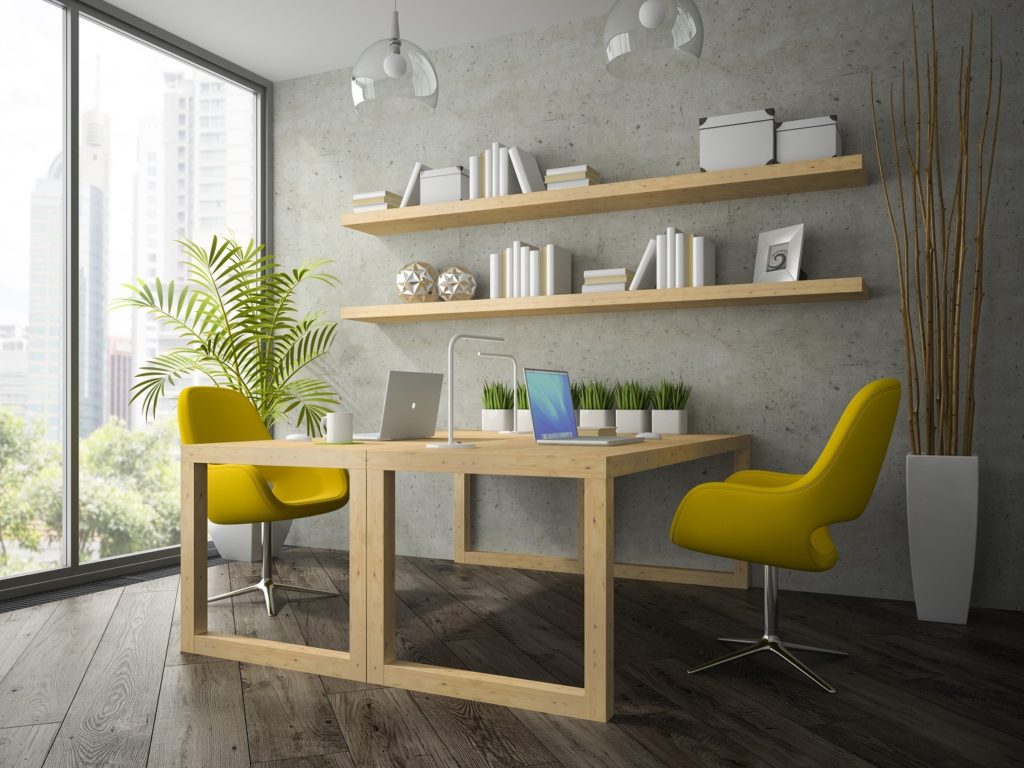Discover how common, everyday office items and building construction may be creating dangerous workplace air quality.
When we speak of air pollution, we often think of smog and particle pollution. While outdoor air pollution is an incredibly important topic that is considered to be a global public health issue, indoor air pollution can be up to ten times more polluted than outdoor air. This fact, coupled with the statistic that we spend roughly 90 percent of our lives indoors, is concerning. Much of that time spent indoors is spent in office environments, as the average office employee works 40-60 hours a week in an office environment.
To better understand workplace air pollution, the common sources need to be explored. They are considered common because everyday objects and office equipment you come into contact with every day can be a source of air pollution.
Laser Printers
One of the most common culprits of workplace air pollution is laser printers. In a report put out by Scientific American, researchers from the Queensland University of Technology in Brisbane, Australia found that laser printers emit high levels of ultrafine particles. As we have discussed before, offices lack adequate ventilation systems, creating an airtight environment which creates poor conditions for air to circulate and ventilate the bad substances out.
Particles emitted from printers can be so small that they can easily enter your bloodstream and lungs. A researcher from the Scientific American explains how these particles can impact your health:
Because these particles are so small, there is a very high probability for these particles to deposit in the deepest alveoli in the lung…; from there they can enter the bloodstream…This could cause changes in blood properties that lead to cardiovascular disease…If the particles contain cancer-causing agents, exposure could also increase the risk of cancer.
Proximity to laser printers is clearly a cause for concern when you take into consideration how these airborne particles can have detrimental effects on your health.
Carpet, Upholstery, and Furniture
Have you ever wondered when the last time the carpet of your workplace was deep cleaned? Numerous people walk on office carpets with shoes that can bring all kinds of pollen and allergens indoors. Along with dust, these allergens get lodged into the carpet and make breathing difficult. This can apply to upholstered chairs or couches as well.
Certain types of furniture can contain chemicals and adhesives which give off gases that are potentially harmful to breathe. Known as off-gassing, some common chemicals found in home and office furnishings include benzene, ethylene glycol or formaldehyde. According to the American Lung Association, some of the side effects of breathing these chemicals include lung cancer and chronic asthma.
Construction Materials
Office buildings always seem to be under construction. Whether it is your office or the floor below, building and construction materials can add a significant amount of harmful pollutants to the indoor air you breathe. Asbestos is a fibrous mineral that, for years, was commonly found in building materials like floor tiling, insulation, and other consumer products that when disturbed, could break apart and release tiny fibers into the air. Breathing these fibers has been found to cause a fatal type of cancer called mesothelioma. Many materials no longer contain this harmful substance, and organizations like our friends at the Mesothelioma and Asbestos Awareness Center are doing great work to raise awareness for the disease.
Other airborne pollutants that can result from building construction and remodeling include drywall dust, sanding of dust or drywall, cleaning chemicals, and paint chemicals.
The long-term effects of careless construction on air quality have been seen in schools with student and teacher performance as well as in offices with employee productivity and focus. The EPA understands the severity of these concerns and has put together a guidebook for improving and maintaining office air quality. You can view the full guide here:
An Office Building Occupants Guide to Indoor Air Quality
Cleaning Products
Most offices have some type of building cleaning service that comes around after the workday to empty trash bins and perform other minor cleaning acts. Volatile organic compounds (VOCs) are found in everyday cleaning supplies, and when released into the air, can cause irritation of the eye and nose, along with respiratory conditions such as asthma and allergies. Some of these everyday cleaners that contain VOCs include aerosol spray products, air fresheners, chlorine bleach, rug, and upholstery cleaners, as well as furniture and floor polish.
Explore all of our products, designed to improve indoor air quality in spaces from 300 square feet to 810 square feet, and find the ideal Venta device for your workplace.



Comments are closed.